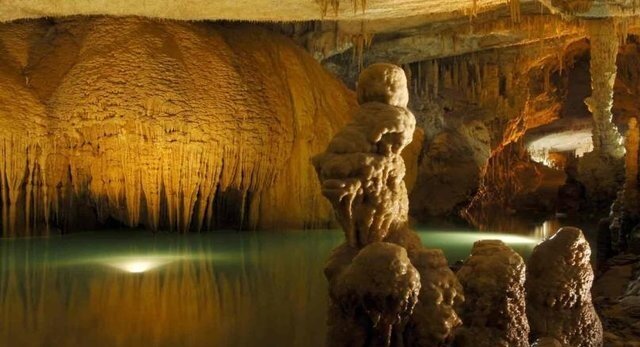50bcm of groundwater withdrawn annually in Iran

TEHRAN – An annual amount of 50 billion cubic meters of groundwater resources are withdrawn to supply agricultural, industrial as well as drinking water in Iran, a researcher in the field of water resources has stated.
The amount is 10 times greater than the water covering Lake Urmia, amounting to 5 billion cubic meters, ISNA quoted Mohammad Reza Goldansaz as saying on Sunday.
About 60 percent of drinking water and the water used in industrial sector and 50 percent of the water consumed in agriculture sector is pumped from aquifers, he noted.
Referring to the country being highly dependent on underground water, Goldansaz said that if the resource runs out, we will face serious problems.
Despite the dire consequences of groundwater resources depletion across the country, no measures have been taken to curb the withdrawal, so, the country’s subsurface water condition is worrisome.
None-renewable reservoir depleting constantly
Looking at the subsurface water level in the country's plains, you will find out that it is constantly falling in most of the plains, which totally means excessive withdrawal from a none-renewable reservoir, he added.
“Groundwater is a valuable resource due to being formed over long periods of time, however, they are completely dependent on occasional rainfall occurrences to recharge. So, they are both renewable and non-renewable, due to the precipitation rates of the country.”
“While in our country, facing permanent droughts and receiving low precipitation, an immediate recharge is farfetched, therefore the water is being withdrawn from non-renewable resources,” he lamented.
Goldansaz went on to say that since past 50 years, over 130 billion cubic meters of underground water resources have been depleted.
Renewable water resources no exception
Environmental official Mohammad Mojabi said in July 2018 that renewable water resources have drastically decreased to less than 100 billion cubic meters from 132 billion cubic meters over the past 50 years, demonstrating 25 percent decline.
Moreover, temperature has increased by 1.1 degrees on the Celsius scale over the past 15 years, which mainly decreases the moisture and increase evaporation and accordingly give rise to sand and dust storms, he added.
Groundwater resources are also in a bad condition, he lamented, adding that out of 609 aquifers in the country 309 are depleted and water withdrawal is not allowed anymore in these aquifers.
Dire consequences of ground water drainage
Goldansaz went on to explain that underground water drainage has devastating consequences such as dried up rivers and wetlands, destruction of vegetation, increase in sand and dust storms, land subsidence, formation of holes and long gaps in the plains and increased salinity of aquifers.
Land subsidence, in addition to hurting infrastructures and buildings, has an irreversible damage to aquifers, since it results in filling of vacant cavities between soil particles and water storage capacity in the aquifers are lost, he added.
Earlier in September 2018, geologist Mohammad Javad Bolourchi said that over 300 plains in Iran are at high risk of experiencing land subsidence, and as long as there is virtually no reduction in illegal overuse of groundwater resources, curbing subsidence will coincide with depletion of aquifers.
For instance, studies indicated that the plains in Varamin county, southern Tehran are subsiding by an average of one millimeter a day (36 centimeters a year), he noted, lamenting that many aquifers in central part of the country are reported salty, which needs huge water desalination systems.
In the Iranian calendar year 1384 (March 2005-March 2006), the subsidence rate in Tehran plain has been measured at 17 centimeters a year, it has been measured 12 centimeters in Varamin county, in southern Tehran.
This is while the run-down in plains of Mashhad or Rafsanjan, which has set the record high for this phenomenon since the Iranian calendar year 1345 (March 1966-March 1967), is certainly higher, regarding the reduction in precipitation rate.
Underground reservoirs condition worrisome
Despite the dire consequences of groundwater resources depletion across the country, no measures have been taken to curb the withdrawal, so, the country’s subsurface water condition is worrisome, Goldansaz regretted.
Comparing aquifers level in past 10 years, he said, have indicated that water level reduction in most aquifers amount to less than 50 centimeters annually, however, water level in some of the major ones reduced over 50 centimeters.
In some small number of aquifers a decline of over 2 meters have been reported, and unfortunately the highest water level reduction is recorded in an aquifer located in Arsanjan county in Fars province, which lowered by 3.4 meters per annum, he added.
In fact, over the past decade water level in aquifers in the area reduced by 30 meters, he regretted, adding, Arsanjan county is among the areas bearing the most damages from excessive water withdrawal.
Of course, considering water level reduction alone is not a complete assessment of the condition’s severity, but in the first step it can provide a clearer picture of the aquifers condition in the country, he concluded.
Why subsurface reservoirs are highly vital?
According to the U.S. Geological Survey's (USGS) Water Science School groundwater is a valuable resource throughout the world. Where surface water, such as lakes and rivers, are scarce or inaccessible, groundwater supplies many of the hydrologic needs of people everywhere. Groundwater depletion, a term often defined as long-term water-level declines caused by sustained groundwater pumping, is a key issue associated with groundwater use.
The water stored in the ground can be compared to money kept in a bank account. If you withdraw money at a faster rate than you deposit new money you will eventually start having account-supply problems. Pumping water out of the ground faster than it is replenished over the long-term causes similar problems. Some of the negative effects of groundwater depletion include drying up of wells, reduction of water in streams and lakes, deterioration of water quality, increased pumping costs, and land subsidence.
FB/MQ/MG
Leave a Comment